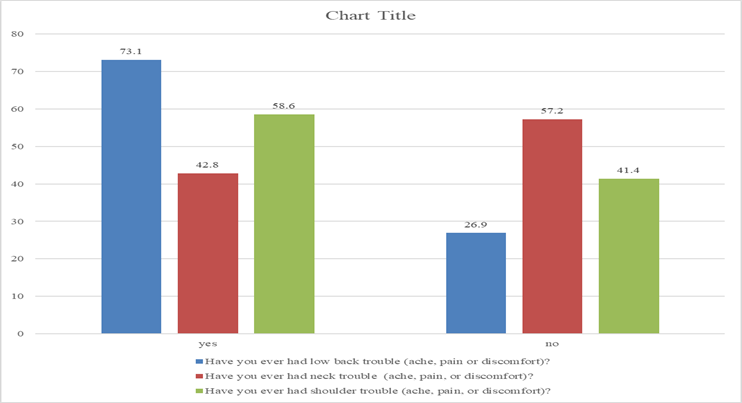“INFLUENCE OF COMPUTER VISION SYNDROME ON MUSCULOSKELETAL AND STRESS RELATED PROBLEMS AMONG MEDICAL STUDENTS”
DOI:
https://doi.org/10.71146/kjmr570Keywords:
Computer Vision syndrome, Musculoskeletal Problems, Digital eye strain, Stress, Medical StudentsAbstract
Introduction: Medical students are increasingly using computers and other visual display terminals (VDT) screens, which raises several health risks. There is, however, a dearth of information regarding the frequency of Computer Vision Syndrome in relation to musculoskeletal and stress-related issues in medical students.
Objectives:
The purpose of this study is to determine the prevalence of CVS among medical students, as well as how the increased use of VDT devices has affected their comprehension of and adherence to preventive measures
Methods:
A cross-sectional descriptive study involving 145 medical students from UMDC, UCPT, and UCNM in Karachi, Pakistan, was conducted utilizing the Computer Vision Syndrome Questionnaire, the Nordic-styled Questionnaire, and a stress questionnaire. The Statistical Package for Social Sciences (SPSS15) was used to examine the data. To investigate the significance of associations, the chi-square test was used to get a significant result with the p-value <0.05 determined to be statistically significant.
Result:
A total of 145 participants participated in the study; 105 were females, 35 were males and 5 were inactive or missing; the age ranged between 19 and 26 years, with a mean of 22.8 years. The prevalence of CVS was 75.9%. A moderate level of work-related stress was experienced by 64.8% of the participants in the study. The typical daily usage of a handheld computer is four hours, while two hours are spent using a computer at home. The most frequently reported visual symptoms of CVS were headache (61.4%), eye strain (55.9%), back discomfort (64.1%), and neck and shoulder pain (51.7%). More than 8 hours of computer use every day OR closer viewing OR the absence of protective goggles OR, the use of eyedrops OR, and the use of anti-glare screens OR were all substantially linked with CVS. The impact of stress on musculoskeletal symptoms and visual symptoms of CVS were not statistically significantly correlated.
Conclusion:
CVS was significantly associated with not taking preventative measures, working overtime, and having an inappropriate viewing distance. Spending more hours per day in front of a VDT DEVICES. However, there is no correlation between CVS and mucus and stress-related conditions
Downloads

Downloads
Published
Issue
Section
License
Copyright (c) 2025 Dr. Erum Tanveer, Dr. Vinod Kumar, Jaweria Razzak, Syeda Sukaina` Mazher, Mehwish Ahmed, Dr. Hamza Ahmed (Author)

This work is licensed under a Creative Commons Attribution 4.0 International License.






